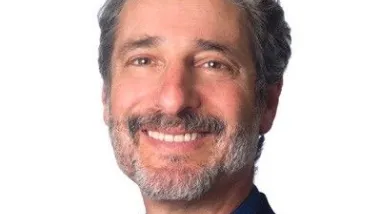Most people that I know want to act responsibly, but when it comes to daily travel decisions they often choose driving over more resource-efficient but less comfortable and convenient alternative modes, such as walking, cycling and public transportation. As a result, they feel guilty, and communities suffer from problems such as congestion, infrastructure costs, consumer costs, accidents, energy consumption, and pollution emissions.
Most people that I know want to act responsibly, but when it comes to daily travel decisions they often choose driving over more resource-efficient but less comfortable and convenient alternative modes, such as walking, cycling and public transportation. As a result, they feel guilty, and communities suffer from problems such as congestion, infrastructure costs, consumer costs, accidents, energy consumption, and pollution emissions.
There is no doubt that comfort and convenience significantly influence transportation decisions. Consumers shopping for an automobile are as likely to base their decisions on seat comfort and sound system quality as on more quantitative factors such as speed, price or fuel efficiency. Similarly, qualitative factors influence consumers when choosing a travel mode: people are much more likely to use alternatives that are comfortable and convenient. Yet, planners lack guidance for evaluating such factors, which leads to an overemphasis on strategies that improve traffic speeds and underinvestment in strategies that improve the comfort and convenience of modes that depend on public support, such as walking, cycling and public transit.
This skews planning and investment decisions in the following ways:
• Potentially cost-effective strategies are overlooked and undervalued, resulting in underinvestment in transit service quality improvements and improvements to walking and cycling conditions. This makes alternative modes less attractive relative to automobile travel.
• Automobile improvements are favored over transit improvements, contributing to a cycle of increased automobile dependency, reduced transit ridership and revenue, land use sprawl, stigmatization of transit, and reduced public support for transit improvements.
• Opportunities for modal integration are overlooked, since many transit quality improvements involve improving walking and cycling conditions, or improving connections with other modes.
My newest paper, "Valuing Transit Service Quality Improvements: Considering Comfort and Convenience In Transport Project Evaluation," addresses this issue by providing a method for adjusting travel time values to account for factors such as travel and waiting comfort, travel reliability, for use in transport modeling. For example, a quality improvement that reduces travel time unit costs (cents per minute or dollars per hour) by 20% provides benefits equivalent to an operational improvement that increases travel speeds by 20%.
This is good news because it indicates that there are many relatively inexpensive ways to improve public transit and attract discretionary riders (people who would otherwise drive), which have previously been overlooked and undervalued. By improving our ability to evaluate consumer needs and preferences it should be possible to identify cost-effective transit service improvements that benefit existing passengers and attract new riders. Most of these improvements have additional spillover benefits such as improving walking conditions, increasing public fitness and health, supporting urban redevelopment, and supporting smart growth land use development.
There is another possible way to deal with this problem. Jurisdictions could require anybody involved in transportation decision-making to spend a couple weeks each year without driving a car. This would force public officials to experience the non-automobile transportation system that they develop. The result, I predict, would be significant improvements in alternative mode comfort and convenience. This would help create a transportation system that allows responsible people to reconcile their travel behavior with their good intentions.

Planetizen Federal Action Tracker
A weekly monitor of how Trump’s orders and actions are impacting planners and planning in America.

Chicago’s Ghost Rails
Just beneath the surface of the modern city lie the remnants of its expansive early 20th-century streetcar system.

Amtrak Cutting Jobs, Funding to High-Speed Rail
The agency plans to cut 10 percent of its workforce and has confirmed it will not fund new high-speed rail projects.

Ohio Forces Data Centers to Prepay for Power
Utilities are calling on states to hold data center operators responsible for new energy demands to prevent leaving consumers on the hook for their bills.

MARTA CEO Steps Down Amid Citizenship Concerns
MARTA’s board announced Thursday that its chief, who is from Canada, is resigning due to questions about his immigration status.

Silicon Valley ‘Bike Superhighway’ Awarded $14M State Grant
A Caltrans grant brings the 10-mile Central Bikeway project connecting Santa Clara and East San Jose closer to fruition.
Urban Design for Planners 1: Software Tools
This six-course series explores essential urban design concepts using open source software and equips planners with the tools they need to participate fully in the urban design process.
Planning for Universal Design
Learn the tools for implementing Universal Design in planning regulations.
Caltrans
City of Fort Worth
Mpact (founded as Rail~Volution)
City of Camden Redevelopment Agency
City of Astoria
City of Portland
City of Laramie



























